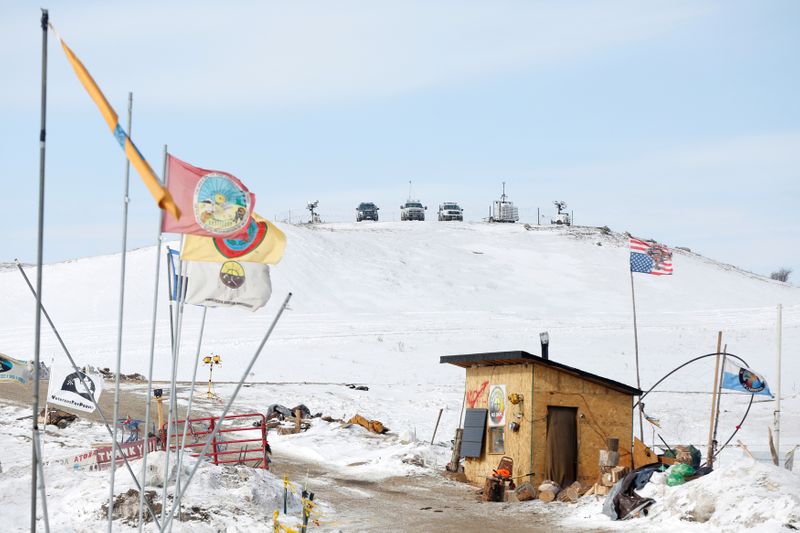
FILE PHOTO: Police vehicles idle on the outskirts of the opposition camp against the Dakota Access oil pipeline near Cannon Ball, North Dakota, U.S., February 8, 2017. REUTERS/Terray Sylvester
July 15, 2020
NEW YORK (Reuters) – The Dakota Access oil pipeline can continue to operate amid an ongoing court battle, a U.S. Appeals Court said on Tuesday, setting aside for now a lower court’s order earlier this month to shut and empty the line.
The U.S. Court of Appeals for the District of Columbia granted Dakota Access, controlled by Energy Transfer LP <ET.N>, an administrative stay while it considers whether the line, long opposed by local tribes and environmental activists, should be shut due to permitting issues dating to 2017.
Tuesday’s ruling means oil can keep flowing through the 570,000-barrel-per-day pipeline, which runs from North Dakota’s oil production fields to Midwest and Gulf Coast refineries.
On July 6, the U.S. District Court for the District of Columbia ordered the line shut and emptied by early August.
The D.C. court ruled the U.S. Army Corps of Engineers violated federal environmental law in 2017 by allowing Energy Transfer to build a portion of the line beneath South Dakota’s Lake Oahe, a crucial drinking-water source for the Standing Rock Sioux tribe.
The Standing Rock tribe led protests for months in 2016 against the Dakota Access construction, which culminated in violent clashes between demonstrators and law enforcement.
In 2017, the Army Corps granted the final easements to finish the one-mile stretch of pipeline under Lake Oahe. The tribes sued, saying the easement was granted without a comprehensive environmental review.
Dakota Access says it would lose as much as $3.5 million each day the line is idled and roughly $1.4 billion if the line is shut for all of 2021. Draining the 1,172 mile (1,886 km) line would take about three months and cost roughly $27 million, it said.
(Reporting by Devika Krishna Kumar and Laila Kearney in New York; Editing by Christian Schmollinger and Tom Brown)

